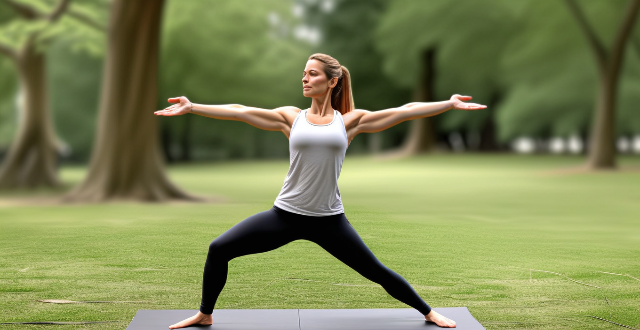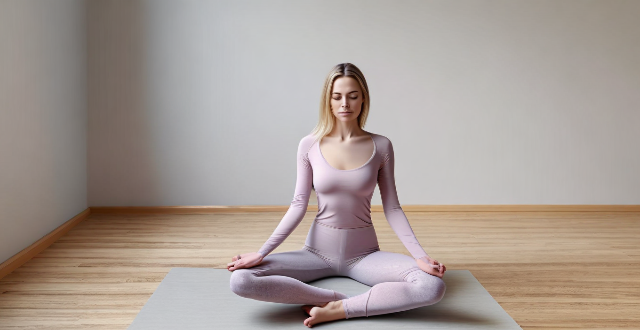Care Practice

How does telemedicine improve patient care and access to health services ?
Telemedicine improves patient care and access to health services by increasing accessibility for both rural and urban patients, enhancing continuity of care, offering cost efficiency, providing a better patient experience through personalized care and convenience, and enabling data-driven decision making.

How are robotics changing surgery and patient care in hospitals ?
The integration of robotics in hospitals is revolutionizing surgery and patient care by enhancing precision, reducing recovery time, increasing accessibility to specialized care, improving training and education, streamlining operations, and fostering personalized medicine. Robotic-assisted surgery offers greater accuracy and minimally invasive techniques, leading to quicker healing and less trauma for patients. Telerobotic surgery expands access to expert care across geographical barriers. Simulation technologies provide a safe environment for surgical practice and the development of new techniques. Automation improves hospital efficiency, from dispensing systems to record management. Personalized medicine is facilitated through customized treatment plans tailored to individual patient needs. Overall, robotics is transforming healthcare delivery, making it more efficient, effective, and accessible.

How do I provide care for someone experiencing anaphylactic shock ?
Anaphylactic shock is a severe allergic reaction that requires immediate care. To provide care for someone experiencing it, recognize the symptoms like skin reactions and respiratory distress, call for emergency help, use an epinephrine auto-injector if available, position the person comfortably, loosen tight clothing, keep them calm, monitor vital signs, and follow instructions from emergency personnel. Timely action can greatly improve the chances of recovery.

How do I care for and maintain my luxury purchases ?
This guide offers comprehensive advice on how to care for various luxury items, including designer handbags, fine jewelry, high-end watches, leather goods, and shoes/apparel. It emphasizes the importance of following manufacturer's instructions, proper storage, gentle handling, regular maintenance, and insurance. Specific tips are provided for each type of luxury item, such as cleaning methods, protection against water damage, and professional check-ups. The guide also suggests avoiding harsh chemicals, focusing on quality over quantity, and seeking professional help for specialized care. By implementing these strategies, individuals can maintain the beauty and functionality of their luxury purchases for years to come.

What are some effective ways to practice social distancing in daily life ?
Effective ways to practice social distancing include staying at home as much as possible, keeping a safe distance from others, wearing a mask or face covering in public, washing hands frequently, cleaning and disinfecting high-touch surfaces, and following respiratory etiquette. These practices can help slow the spread of infectious diseases and protect individuals and communities.

What are the best practices for women's health maintenance ?
The text outlines best practices for women's health maintenance, emphasizing regular check-ups and screenings, healthy eating habits, physical activity, mental health care, reproductive health, preventive measures, and lifestyle choices. The article suggests annual wellness visits, pap smears and HPV tests, mammograms, breast self-exams, a balanced diet with plenty of water and limited processed foods, regular exercise including strength training and flexibility exercises, stress management, adequate sleep, social support, professional help for mental health concerns, discussion of birth control options, menstrual hygiene, pregnancy care, staying up to date on immunizations, sun protection, safe sex practices, limiting alcohol, avoiding smoking, and steering clear of illicit drugs. These recommendations are intended to help women maintain their health and wellbeing throughout their lives, with the caveat that individual circumstances and needs should guide healthcare decisions in conjunction with professional advice.

How to care for and maintain your sports fashion garments ?
Sporting fashion garments are designed to be both stylish and functional, but they also require special care to maintain their quality and appearance. Here are some tips on how to properly care for and maintain your sports fashion garments: Washing instructions include reading the label, sorting clothes, using a gentle detergent, hand washing or machine washing on delicate cycle, and avoiding tumble drying. Maintenance tips include storing properly, avoiding ironing, spot cleaning stains, rotating garments, and repairing tears and holes. By following these care and maintenance tips, you can extend the lifespan of your sports fashion garments and keep them looking their best for years to come.

What is the best way to practice speaking a new language ?
The article provides a summary of the best ways to practice speaking a new language, which include immersing oneself in the language, speaking frequently and without fear of making mistakes, practicing regularly, focusing on pronunciation and fluency, and learning through real-life conversations. Consistency and practice are emphasized as key factors in improving language skills.

Do sports rehabilitation centers offer preventative care to avoid future injuries ?
Sports rehabilitation centers play a crucial role in offering preventative care services to help individuals avoid future injuries. They provide comprehensive assessments, customized exercise programs, education and training, utilize advanced equipment and technology, and collaborate with healthcare professionals to improve overall health and reduce the risk of re-injury.

What is the best time of day to practice yoga poses ?
Yoga offers numerous benefits for both the body and mind. The best time of day to practice yoga poses varies from person to person, depending on individual schedules, preferences, and needs. Morning sessions can kickstart metabolism and improve mental clarity, midday practices can relieve stress and rejuvenate the body, while evening yoga can help relax and prepare for sleep. Consistency is key in any yoga practice, so find what works best for you and maintain regularity for optimal results.

Are there any natural or organic feminine care products available in the market ?
Natural and organic feminine care products have become increasingly popular as consumers seek gentler, chemical-free options for their personal hygiene. These products include natural deodorants, organic tampons and pads, shampoos and soaps made with plant-based ingredients, herbal remedies for menstrual pain relief, dietary supplements to support hormonal balance, and skincare solutions for feminine areas. By choosing these products, individuals can prioritize their health while also supporting sustainable practices in the beauty industry.

How do professional athletes train and practice ?
Professional athletes engage in comprehensive training and practice routines to excel in their sports. Their regimens include physical conditioning through cardiovascular exercises, strength training, and flexibility practices. They also focus on technical skill development through repetitive drills, scrimmages, video analysis, and virtual reality training. Mental preparation is equally important, involving visualization techniques and sports psychology consultations. Recovery and regeneration strategies encompass proper nutrition, sleep habits, and active recovery methods like light exercise and massage therapy. These components all work together to ensure athletes reach peak performance while minimizing the risk of injury.

How often should I practice easy yoga poses to see results ?
The article discusses how often one should practice easy yoga poses to see results. Consistency is crucial, and beginners should aim for two to three times per week while intermediate practitioners can increase frequency to four or five times per week. Advanced practitioners may benefit from practicing six or seven times per week but should listen to their body and rest when needed. Quality is more important than quantity, and tips for maximizing your yoga practice include mixing up poses, using props, staying present, and practicing mindfulness.

How often should I practice to see improvement in my golf skills ?
Golf improvement requires consistent practice, and the frequencyGolf improvement requires consistent practice, and the frequency your skill level, goals, and the frequency of your sessions depends on your skill level, goals, and availability. Assess your current skill level and set realistic goals to create a practice plan that includes both on-course and off-course activities. Beginners should aim for at least three practice sessions per week, while intermediates can do two to three and advanced players one or two. Make each session count by focusing on specific goals and tracking progress. Consistency is key, so stick to your practice plan and adjust it as needed based on your progress.

What are some effective strategies for managing chronic conditions as part of personal health care ?
Managing chronic conditions requires a combination of self-care, education, lifestyle changes, and support from others. Developing a self-care plan, educating yourself about your condition, making healthy lifestyle choices, and seeking support from family and friends are all effective strategies for managing chronic conditions. By taking an active role in managing your symptoms and communicating effectively with your healthcare team, you can improve your overall quality of life and reduce the impact of your condition on your daily activities.

Can sports be considered a form of worship or spiritual practice ?
The provided text discusses the possibility of considering sports as a form of worship or spiritual practice. It explores the psychological and emotional benefits, community building, and mindfulness aspects of sports, suggesting that they offer experiences similar to those found in traditional spiritual practices. While sports may not be seen as a conventional form of worship, they can serve as a secular equivalent of spiritual practice, offering personal growth, connection, and inner peace.

How many times a week should I practice yoga poses to see results ?
Practicing yoga poses is an excellent way to improve your flexibility, strength, and overall well-being. However, the frequency of your practice can greatly impact the results you achieve. In this article, we will discuss how many times a week you should practice yoga poses to see noticeable improvements in your physical and mental health. Before determining the ideal number of yoga sessions per week, it's essential to consider several key factors: your current fitness level and experience with yoga, the amount of time you can dedicate to each session, and your specific goals (e.g., increased flexibility, stress relief, muscle building). By taking these factors into account, you can create a personalized yoga routine that suits your needs and helps you achieve your desired outcomes. For beginners, starting with two or three sessions per week is generally recommended. This allows your body to gradually adapt to the postures and prevents overexertion or injury. As you become more comfortable with the practice, you can gradually increase the frequency of your sessions. Once you have established a consistent yoga practice and gained some experience, increasing the frequency of your sessions can help you continue to see progress. For intermediate practitioners, aiming for four to five sessions per week is often beneficial. This allows you to maintain your current level of flexibility and strength while also challenging yourself to try more advanced postures and sequences. Advanced yogis who have been practicing for several years may choose to practice daily or even multiple times per day. This level of commitment requires a significant amount of time, discipline, and dedication but can lead to profound transformations in both physical ability and mental clarity. Regardless of how frequently you choose to practice yoga poses, there are several tips that can help you maximize the benefits of your sessions: set clear goals, mix up your routine, stay hydrated, and listen to your body. By following these guidelines and adjusting your frequency based on your individual needs and goals, you can create a yoga practice that leads to lasting improvements in both your physical and mental well-being.

How important is hands-on practice in personal safety training compared to theoretical knowledge ?
In today's world, personal safety training is crucial to ensure individuals can protect themselves from potential threats and risks. While theoretical knowledge provides a foundation for understanding these risks, hands-on practice is essential for effective training. Hands-on practice provides a realistic experience that allows individuals to apply what they have learned in real-life situations. It also helps develop skills that can be applied across various scenarios, reinforces learning, and builds confidence. Therefore, incorporating hands-on practice into personal safety training programs is crucial for individuals to develop the skills needed to respond appropriately to threats and risks in real-life situations.

How can women ensure they have access to medical care and support in case of illness or injury while traveling ?
How Can Women Ensure They Have Access to Medical Care and Support in Case of Illness or Injury While Traveling? Traveling can be an exciting adventure, but it's important to ensure that you have access to medical care and support in case of illness or injury. Here are some tips for women to ensure they have access to medical care while traveling: 1. Research Before You Go: Before embarking on your journey, research the local healthcare system and facilities. Look for hospitals, clinics, and pharmacies in the area you will be visiting. Make a list of emergency numbers and keep them with you at all times. 2. Get Travel Insurance: Consider purchasing travel insurance that includes medical coverage. This will give you peace of mind knowing that you are covered in case of an unexpected illness or injury. 3. Pack a First Aid Kit: Pack a first aid kit with essential items such as bandages, antiseptic wipes, pain relievers, and any prescription medications you may need. It's also a good idea to bring along copies of your prescriptions in case you need to refill them while traveling. 4. Stay Healthy: Take steps to stay healthy while traveling. Wash your hands frequently, eat nutritious meals, drink plenty of water, and get enough sleep. Avoid risky behaviors such as excessive alcohol consumption or participating in dangerous activities without proper safety gear. 5. Seek Help When Needed: If you do become ill or injured while traveling, don't hesitate to seek medical attention. Many countries have English-speaking doctors and nurses who can provide assistance. If you are unable to communicate effectively with local healthcare providers, consider using translation services or seeking out expatriate communities for support. In conclusion, ensuring access to medical care and support while traveling is crucial for women's health and safety. By doing your research beforehand, getting travel insurance, packing a first aid kit, staying healthy, and seeking help when needed, you can enjoy your travels with peace of mind knowing that you are prepared for any potential emergencies.

How can I improve my personal health ?
Improving personal health involves a holistic approach that includes dietary habits, physical activity, mental well-being, and preventive care. Here's how to enhance your overall health: 1. **Dietary Habits**: Consume a balanced diet with fruits, vegetables, whole grains, lean proteins, and limited processed foods. Stay hydrated and practice mindful eating. 2. **Physical Activity**: Engage in regular exercise, including cardiovascular activities, strength training, and flexibility exercises. Adopt an active lifestyle by taking stairs and walking or biking short distances. 3. **Mental Well-being**: Manage stress through relaxation techniques, hobbies, and seeking professional help if needed. Ensure quality sleep and maintain positive thinking. 4. **Preventive Care**: Visit healthcare providers for regular check-ups and stay up to date with screenings and vaccinations. Make healthy lifestyle choices and be environmentally aware. Consistency is crucial, so start small and gradually build upon these practices to improve your personal health and well-being.

How does sports medicine differ from traditional medicine ?
Sports medicine is a specialized field that focuses on preventing, diagnosing, and treating injuries related to physical activity and sports. It differs from traditional medicine in several key ways: 1. **Prevention vs. Treatment**: Sports medicine emphasizes injury prevention through physical assessments, customized training programs, and equipment recommendations. Traditional medicine often deals with treating injuries after they occur, using diagnosis, medication, and surgery. 2. **Specialization vs. Generalization**: Sports medicine professionals are highly specialized in understanding the needs of athletes, while traditional medicine practitioners have a more generalized approach. 3. **Collaborative Care vs. Solo Practice**: Sports medicine involves a collaborative team effort, including coaches, trainers, physicians, and therapists. Traditional medicine may be more focused on individual practitioners working independently.

How do I choose a good quality yoga mat ?
When selecting a yoga mat, consider factors such as material, thickness, texture, durability, eco-friendliness, price, extra features, and cleaning care. Materials range from PVC to natural rubber and jute, each with its pros and cons. Thickness varies from 1.5mm for travel to 5mm+ for cushioning. Texture can be smooth or grippy, affecting slip resistance. Durability is crucial for long-lasting use. Eco-friendly options are available for environmentally conscious yogis. Price doesn't always equate to quality, so find a mat that fits your budget. Extra features like alignment markers and travel straps can enhance your practice. Cleaning and care requirements vary, so choose a mat you're willing to maintain. The best yoga mat supports your practice physically and ethically, ensuring you enjoy using it and progress in your yoga journey.

What strategies can women use to prioritize their mental health while balancing work and family responsibilities ?
This text discusses the importance of prioritizing mental health for women, especially while they are juggling work and family responsibilities. It provides several strategies to help achieve a healthy work-life balance, including developing a self-care routine, setting boundaries, building support systems, managing time effectively, and engaging in self-reflection and growth activities. The text emphasizes that taking care of oneself is not selfish but essential for maintaining overall well-being and happiness.

What are some common health tips shared by celebrities ?
Celebrities often share their health tips and tricks with the public. Here are some of the most common ones: 1. Drink plenty of water to stay hydrated throughout the day. 2. Eat a balanced diet that includes a variety of fruits, vegetables, whole grains, lean proteins, and healthy fats. 3. Get enough sleep, ideally 7-8 hours each night, to improve mood, concentration, and physical performance. 4. Practice mindfulness and meditation to reduce stress and promote mental clarity. 5. Incorporate physical activity into your daily routine through cardio exercises, strength training, or yoga. 6. Prioritize self-care practices such as taking time for hobbies, spending time with loved ones, or simply taking a relaxing bath or reading a book. 7. Avoid harmful substances such as tobacco, alcohol, and drugs to maintain good physical and mental health. 8. Maintain good hygiene habits by washing your hands regularly, brushing your teeth twice a day, and showering or bathing regularly to prevent illness and promote overall health.

What are some effective techniques for improving my writing ?
Improving your writing skills involves a combination of reading, practicing, and receiving feedback. Regular reading helps in understanding different styles and techniques, while daily writing exercises such as journaling or crafting short stories enhance clarity and coherence. Grammar and vocabulary practice through exercises and learning new words are crucial. Seeking peer and professional feedback allows for constructive criticism. Revision is key, with multiple drafts and editing tools aiding in refining work. Studying writing techniques through courses and books deepens understanding. Setting writing goals, experimenting with different styles, and using writing prompts foster creativity and structured practice. Lastly, maintaining a healthy lifestyle supports mental clarity and creativity. Consistent effort and patience lead to significant improvements in writing skills over time.

How do I maintain and care for my brushless motor ?
Taking care of your brushless motor is essential to ensure its longevity and performance. Here are some tips on how to maintain and care for your brushless motor: Regular Cleaning: - Clean the motor, heat sink, and propeller regularly to remove dirt, dust, or debris. Lubrication: - Lubricate the bearings with a high-quality lubricant to reduce friction and wear. - Avoid overlubrication as it can attract dirt and debris. Inspection: - Inspect the motor, wiring connections, and propeller for any signs of damage or corrosion. - Replace damaged components or the entire motor if necessary. Storage: - Store your brushless motor in a dry place to prevent moisture from entering the motor. - Avoid storing the motor in direct sunlight to prevent discoloration and damage to the components. Usage: - Avoid overloading the motor by using the appropriate propeller size and battery voltage. - Use a LiPo battery with an appropriate C rating for optimal performance. - Avoid exposing the motor to water as it can cause damage to the electronic components. By following these maintenance and care tips, you can ensure that your brushless motor performs at its best and lasts for a long time.